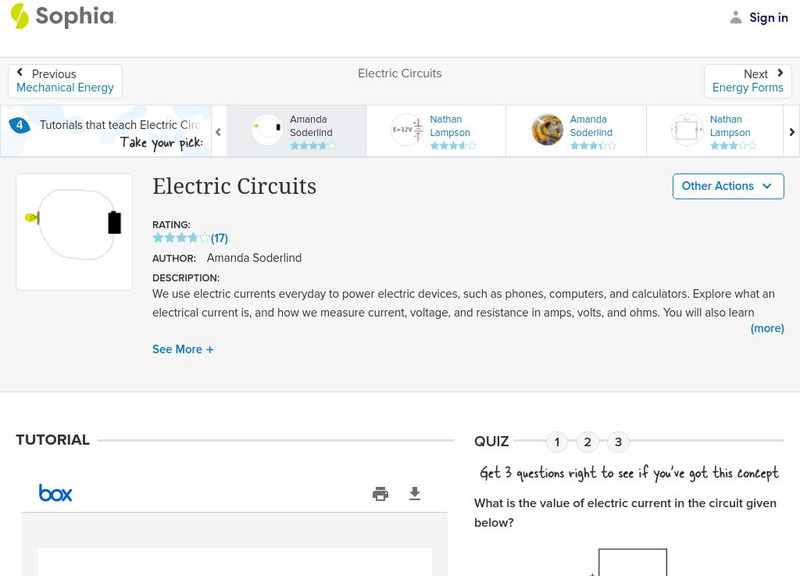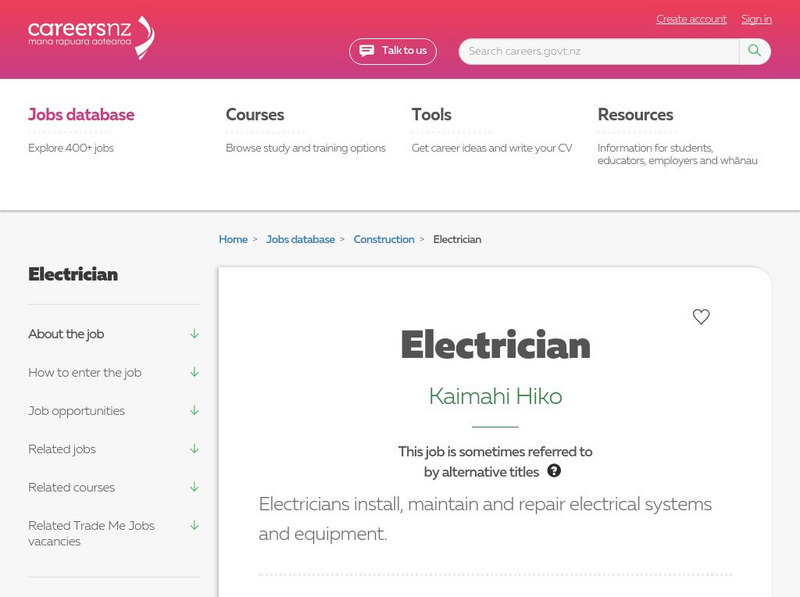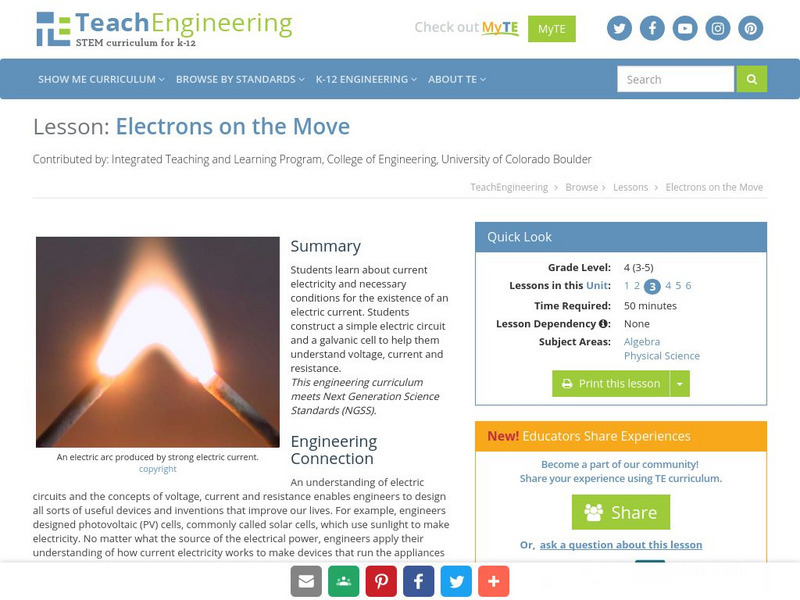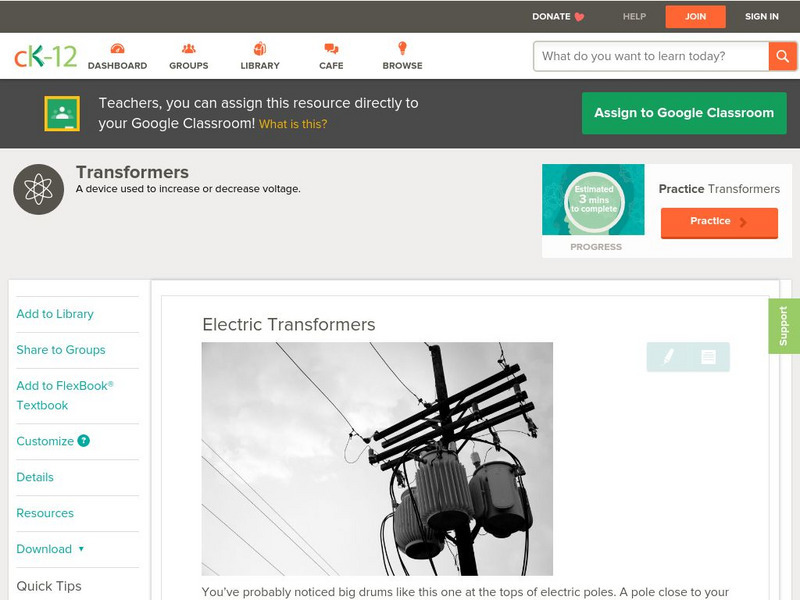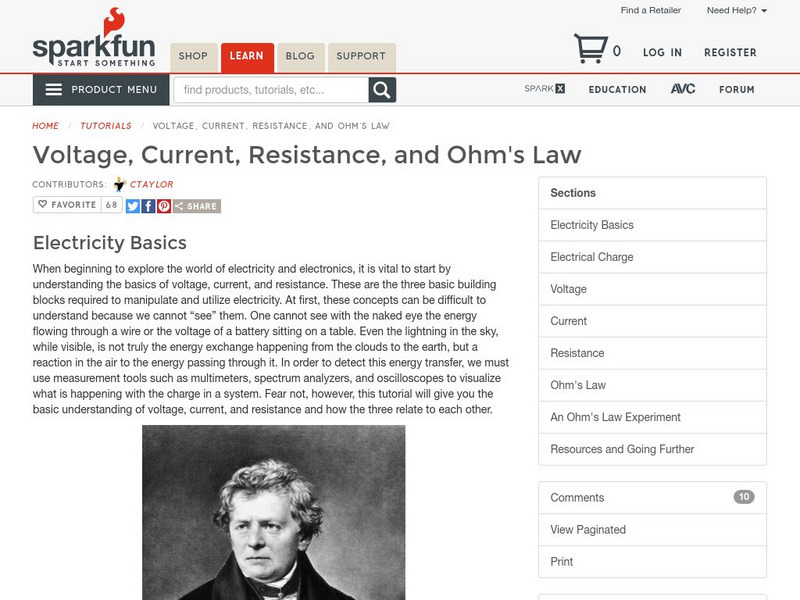Hi, what do you want to do?
University of Waterloo (Canada)
Computer Assisted Chem. Tutorial/chemistry of Batteries
A superb explanation of how a battery works. Discusses the associated chemistry which explains how a battery produces a voltage. Includes a series of "Confidence Building Questions."
Other
Need: Measuring Electricity [Pdf]
This site details many of the ways in which to measure electricity. Among the topics covered by this page is resistance and voltage as well as electrical energy and Ohm's Law.
Sophia Learning
Sophia: Electric Circuits: Lesson 3
This lesson will explain how to calculate voltage, current, and resistance in simple electric circuits. It is 3 of 4 in the series titled "Electric Circuits."
Careers New Zealand
Career Nz: Electrician
This site contains information about becoming an Electrician in New Zealand. While some of the information is specific to New Zealand, there is also data that is uniform to the career.
Famous Scientists
Famous Scientists: Georg Ohm
Find out about the German physicist and mathematician whose work in the field of electrical current shaped the study of electricity.
TeachEngineering
Teach Engineering: Completing the Circuit
In the everyday electrical devices we use - calculators, remote controls and cell phones - a voltage source such as a battery is required to close the circuit and operate the device. In this hands-on activity, students use a battery,...
TeachEngineering
Teach Engineering: Hands on Activity: Designing a Thermostat
By building a basic thermostat, students will explore basic circuitry and electricity. The thermostat built out of a breadboard, temperature sensor chip, amplifier, and battery creates a linear relationship between temperature of the...
TeachEngineering
Teach Engineering: Electrons on the Move
Students learn about current electricity and necessary conditions for the existence of an electric current. Students construct a simple electric circuit and a galvanic cell to help them understand voltage, current and resistance.
CK-12 Foundation
Ck 12: Physical Science: Electric Transformers
[Free Registration/Login may be required to access all resource tools.] Discusses how an electric transformer works and step-up and step-down transformers.
Other
Spark Fun: Voltage, Current, Resistance, and Ohm's Law
Whether you are looking for an introduction to resistors, volt, and current, or just looking for a reference, this article provides great information for all ability levels. Great videos, diagrams, images, and links to more information...
Museum of Science
The Atom's Family: Fruity Electricity
Frankenstein's electricity is out. In this activity, students help him find another source of energy using citrus fruit. Good for students who want to do their own projects or for class lessons.
Oswego City School District
Regents Exam Prep Center: Electricity: The Mouse Cheese Analogy
This page uses a mouse and cheese analogy to show the relationships involved in electricity through currents and charges. Among the topics covered by the analogy are voltage, resistance and electromagnetism.
Physics Aviary
Physics Aviary: Practice Problems: Rc in Ac Problem
Determine the rms current and voltage in an RC circuit powered by an AC power supply.
Physics Aviary
Physics Aviary: Practice Problems: Rl in Ac Problem
Determine the rms current and voltage in an RL circuit powered by an AC power supply.
Physics Aviary
Physics Aviary: Practice Problems: Lc in Ac Problem
Determine the rms current in an LC circuit powered by an AC power supply. Then find the frequency that will cause a spike in current in the circuit.
Physics Aviary
Physics Aviary: Practice Problems: Rlc in Ac Problem
Determine the rms current and voltage in an RLC circuit powered by an AC power supply.
Physics Aviary
Physics Aviary: Practice Problems: Parallel Circuit With Internal Resistance
Find the terminal voltage of a battery with significant internal resistance. Determine the power of one of the external components for the circuit.
Physics Aviary
Physics Aviary: Practice Problems: Finding Battery Voltage Hardest
Determine the voltage of the battery based on the colors of the resistors and the current in a combination circuit.
Physics Aviary
Physics Aviary: Practice Problems: Finding Battery Voltage Simple
Determine the voltage of the battery based on the colors of the resistor and the current in the circuit.
Physics Aviary
Physics Aviary: Practice Problems: Finding Battery Voltage Medium
Determine the voltage of the battery based on the colors of the resistors and the current in the series circuit.
Physics Aviary
Physics Aviary: Practice Problems: Finding Battery Voltage Harder
Determine the voltage of the battery based on the colors of the resistors and the current in the parallel circuit.
Physics Aviary
Physics Aviary: Practice Problems: Charge Causing Voltage
Determine the net voltage from two charges.
Physics Aviary
Physics Aviary: Practice Problems: Voltage From Two Charges
Determine the net voltage from two charges.
Physics Aviary
Physics Aviary: Simple Circuit Lab
This lab is designed to have students investigate the relationships between voltage, resistance and current in a circuit with only one passive component. The batteries in this simulation can be varied from ideal batteries to batteries...





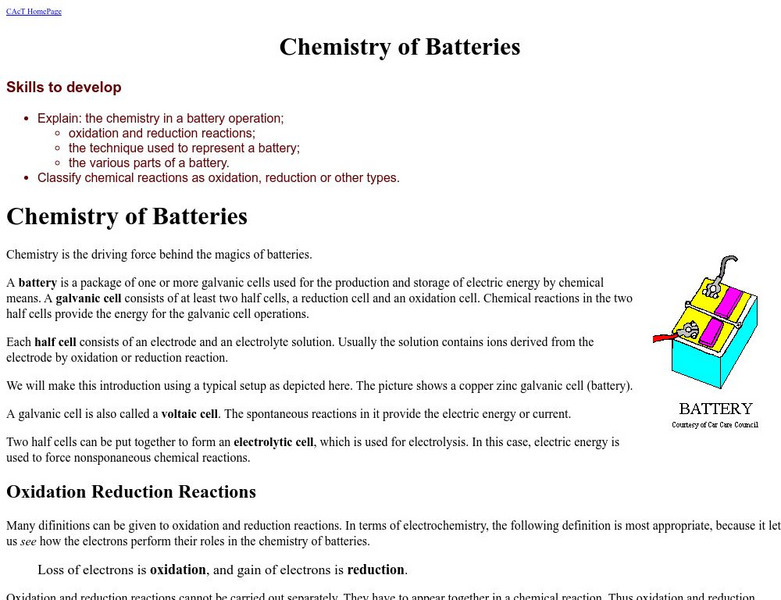
![Need: Measuring Electricity [Pdf] Handout Need: Measuring Electricity [Pdf] Handout](https://static.lp.lexp.cloud/images/attachment_defaults/resource/large/FPO-knovation.png)
